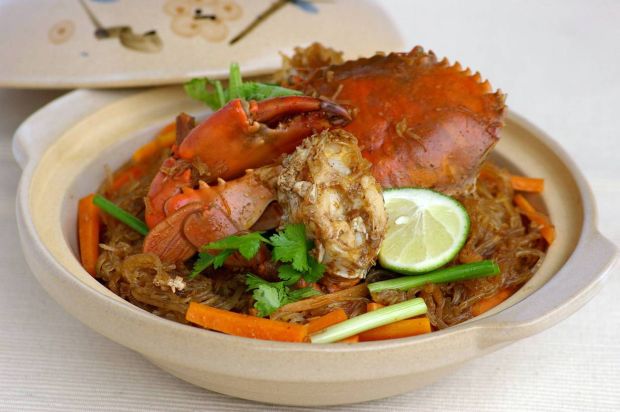Recipe Description
PAYASAM is a sweet treat that many look forward to as its silky and appealing taste helps calm the taste buds after a spicy South Indian meal. Milk, ghee, semiya (vermicelli sold at Indian grocers), sugar and cardamom as well as raisins and cashew nuts are all one needs to make this traditional one-pot dessert.
I remember fresh santan, or santan and fresh milk being used whenever payasam was prepared while I was growing up. Fresh coconut milk may not be easy to come by for those living in the city unless you visit the morning market so it makes perfect sense to use fresh milk or the UHT variety instead.
My former colleague Priya Menon, who used to make payasam for her StarMetro family during our Deepavali get-togethers, shared her mother’s recipe for this column. Priya’s recipe does not call for sago but I realised, after talking to a few payasam aficionados, that some like the mouth-feel of this starchy ingredient hence its inclusion here. While it is not difficult to make payasam, a little know-how goes a long way in impressing your guests if this milky sweet treat has semiya and sago among its ingredients. Some cooks use rice instead of semiya for payasam.
A useful tip is to keep watch over the pot of milk and stir continuously to ensure that it does not burn or boil over.
Secondly, if sago is used as an ingredient then it is advisable to boil it until the pearls turn translucent before discarding the starchy water. This method helps prevent the payasam from becoming too thick.
Some recipes call for groundnuts instead of cashew nuts or omit them altogether if nuts are forbidden in your diet.
There are cooks who add a touch of yellow food colouring but I think the inclusion of ghee, cashew nuts, raisins and semiya gives the payasam a rather attractive pale hue.
In fact, payasam is a dish that quite a few cooks prepare for the Festival of Lights as it wraps up a hearty meal rather nicely. Happy Deepavali everyone!
Recipe Ingredient
- 1 packet semiya (200g to 230g)
- 1.5 litres full cream milk
- 12 tablespoons of sugar (or more according to taste)
- 150g sago
- 50g cashew nuts
- 50g raisins
- 3 tablespoons ghee
- 10 cardamom pods
- ½ tsp salt
- 2 cups water (to soak sago)
- 4 cups water (to boil sago)
Instructions
- Soak 150g of sago in 2 cups of water for 20 minutes. Strain and add to a pot containing 4 cups of boiling water. Stir the sago to prevent them from clumping together and boil for about five minutes.
- Once the sago pearls turn translucent, use a mesh strainer to drain off the water. Place the strainer over a bowl filled with water, allowing the wire mesh to sit in water. Wash the sago pearls further to rid them of excess starch.
- Remove sago and place in a container. Add half a cup of milk (from the 1.5 litres) to keep the sago pearls from sticking together.
- Place a deep pot on the stove, add ghee and throw in the cashew nuts. Fry the cashew nuts until golden brown and speedily remove from the oil.
- Next, add raisins to the ghee and remove them once they plump up.
- The semiya goes in next. Fry these until they are slightly brown and remove them from the heat. Use a sieve to strain out the ghee and set it aside.
- In the same pot, add the rest of the milk and bring to a boil while stirring constantly. Add the fried semiya and let it cook for about 10 minutes until the strands are somewhat soft.
- Bring the heat down and return excess ghee to the pot. Add 12 tbsp sugar, cashew nuts and raisins to the milk mixture.
- Add in ½ tsp salt as well. Pound cardamom pods until the seeds turn to powder. Discard the skin. Add cardamom powder to aromatise the dessert.
- Finally, add the sago-in-milk to the pot and stir to combine. Turn off the heat and serve hot or cold.










